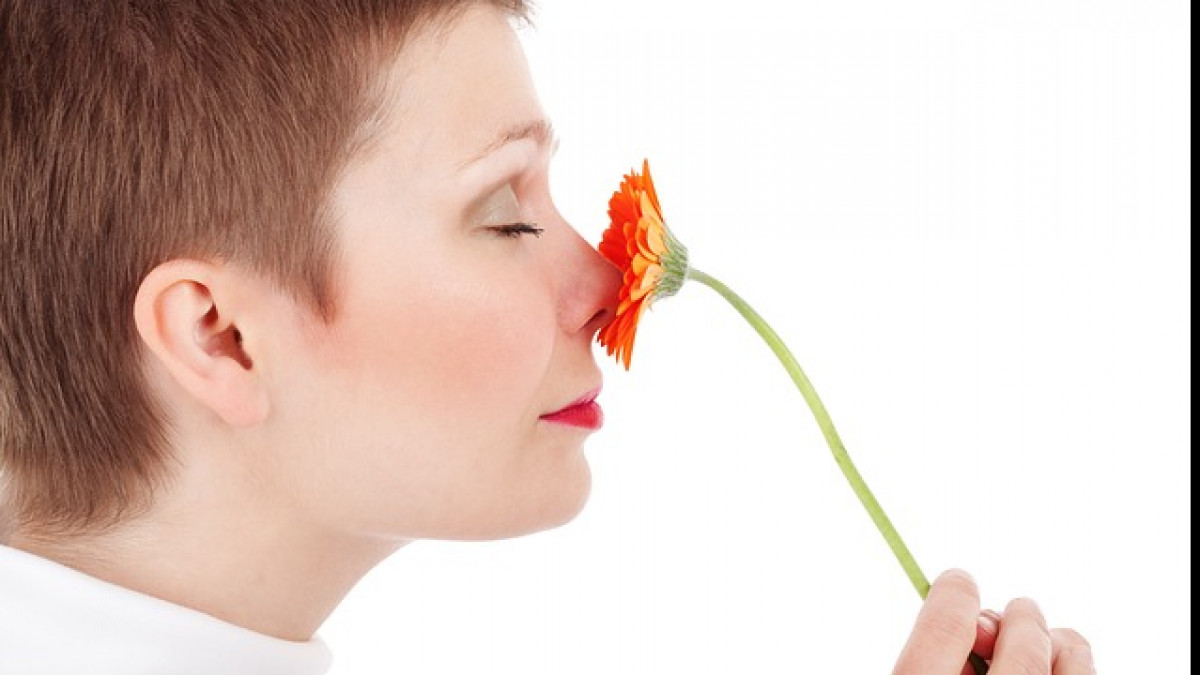Listen to your nose and regain your sense of smell

Smell training can help regain our sense of smell after a temporary loss. Simple techniques help COVID-19 patients listen to their noses again.
Published September, 1, 2021
Listen to your nose every day is the mantra I repeat to the students joining my training programs. I confess I stole this phrase from my friend, Dr. Ann Noble, the creator of the Wine Aroma Wheel.
Listening to your nose means being aware of your olfactory environment, at home, outside, everywhere. That’s an excellent way to learn new aromas and strengthen your memory with familiar odors but smelled in different contexts.
But what happens when your nose becomes silent.
The NYT reported the story of Mr. Crippa, a renowned Italian chef [1].
“Then, at 9:40 a.m. on Mar. 17, 2020, Mr. Crippa, 32, poured himself a cup of coffee. He tasted only hot water.”
You probably guess that a COVID infection triggered his loss of smell.
Although a rough start, the story provides hope that full or partial recovery is possible.
Smell Training
New findings on the impact of COVID-19 on our sense of smell
Mr. Crippa’s story is not isolated. A new study shows how the COVID-19 infection alters our sense of smell, even when we don’t lose 100% of our capacity.Dr. Camilla Cattaneo, from the University of Milano, presented the preliminary results of a study comparing smelling abilities of healthy individuals with hospitalized COVID-19 patients [14th Pangborn Sensory Symposium, August 9-12, 2021].
These two groups conducted two tests.
1- The identification of 12 odors (anise, banana, coffee, garlic, clove, lavender, lemon, mint, onion, orange, pine, and vanilla) and an assessment of their level of intensity,
2-The identification of 4 basic tastes (bitter, salty, sour, sweet) and an evaluation of their level of intensity.
Although preliminary, the data showed that the healthy individuals could identify more odors and more tastes than the COVID-19 patients. And, they perceived the intensities stronger overall than the patients.
Can we regain our sense of smell?
The media reports more and more initiatives to help COVID-19 patients retrain their noses. Here are a few examples.
- Sensory scientists open their labs to host patients and undergo rigorous training to smell again [1]. The training consists of re-familiarising people with these smells, using essentials oils or actual products. Patients would relearn only a few scents at a time.
- A perfumer organizes smelling tours to relearn the smell of life [2]. Walking in the woods or by the sea, he helps people notice the abundant smells in nature.
- Other people offer advice online, and therapists help patients with 1:1 consultations and training at home [3].
These smell training programs aren't so different from the sensory training we go through when we learn to describe wine aromas. It's a matter of becoming familiar with the aroma, repeated smelling exercises, before being able to identify the aroma in a wine.
Let’s revisit the two-step smell training
Smell training works when viral infections cause impairment. Unfortunately, if the olfactory nerve is damaged or sectioned during an accident, recovering smell is impossible.
I’ve reported before how two-step training can help reconnect the neuro-nasal pathways affected by the virus.
Check out the 2020 article on Loss of Smell.
- It consists of a first phase in which you retrain the olfactory system by visualizing familiar odors. Although you can’t technically detect the smell, imaging that you notice it helps retrain the processes.
- The second phase consists of smelling actual odorants every day. Until one day, the circuits reopen, and you can detect the odor.
According to this report, “the physiological effects of such simple training through repeated exposures are directly highlighted in the olfactory epithelium, the olfactory bulb.”
The keyword is repeated exposure.
Whether you consider having a “weak nose” or trying to enhance your sense of smell, there is hope through smell training. It’ll require time, consistency, and patience.
But you can do it.
So how will you start listening again to your nose?
Let us know in a comment below.
References
[1] ‘Super Taster’ Who Lost Sense of Smell Is Helping Italians Regain It. New York Times, August 20, 2021
[2] Fragrance Maker Dares to Sniff ‘What Life Really Smells Like’. New York Times, August 7, 2021
[3] Will Fish Sauce and Charred Oranges Return the World Covid Took From Me? New York Times March 2, 2021.
Categories: : Tasting education
Download your Free Resources

Unlock your senses
The Sensory Approach to Wine Tasting

The 5 Mistakes Turning Tasting Guests Away and How to Fix them Fast

Isabelle Lesschaeve, PhD
Blog author, Wine Sensory Scientist and Wine Tasting Coach
Internationally renowned wine sensory scientist, Isabelle demystifies wine tasting and helps serious wine lovers improve their senses of smell and taste to sharpen their tasting skills and tasting notes.
InnoVinum LLC is a participant in the Amazon Services LLC Associates Program, an affiliate advertising program designed to provide means for sites to earn advertising fees through advertising and linking to amazon.com.
 Isabelle Lesschaeve
Isabelle Lesschaeve 